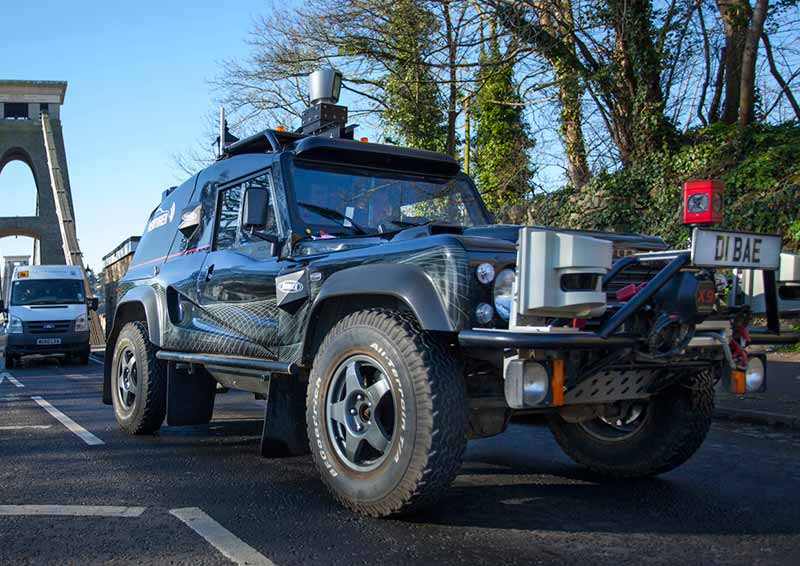Autonomous vehicles and the insurance market
The Vehicle Technology and Aviation Bill 2017 promises answers to the question of how autonomous vehicles (AVs) can be insured.
From the moment AXA became involved with automated vehicle testing they were clear about the societal benefits they thought this technology could deliver - less accidents, safer roads, reduced congestion and a mobility solution for people who are currently unable to drive, and so on.
The initial risk was that the motor insurance market would be turned upside down, but the recently published Bill represents a great first step towards an insurance system that would be both familiar to customers and deliverable by insurance companies.
By effectively placing a strict liability on insurers to pay out in the event of an accident involving an automated vehicle, the bill retains the status quo and places road user and pedestrian safety at its core.
In addition, reaffirming the rights of recovery available to insurers under existing legislation (negligence, products liability, etc.), means that the burden of liability will not fall heavily on those who will be responsible for the pioneering research and development – motor manufacturers, tech and software companies – thereby potentially stifling innovation.
Frustratingly, there will be a delay to this bill becoming law as it won’t be passed in time for the general election (June 2017), but will hopefully be reintroduced in the next Parliament.
Further ahead, there are questions that insurers need to ask around the connectivity aspect of these vehicles.
With cars communicating with each other, with transport infrastructure or indeed a local network transport operator, then data privacy, data access for third parties such as insurers, and cyber security are issues that need to be resolved.
For example, as there is a move towards connected and autonomous vehicles becoming a reality, it would be preferable to avoid an unnecessarily proprietary approach to essential data requirements.
If the goal is to create a transport ecosystem that is rooted in connectivity, then it is important to recognise that relevant information will be generated by onboard automated features, by vehicle-to-vehicle (V2V) communications, and by vehicle-to-infrastructure (V2I) communications. A level of data sharing between the various parties will be absolutely key.
However, the fast-paced nature of change in this area, coupled with the collaborative approach that the UK government and all sorts of different companies are taking, suggests it won't be too long until we begin to get some answers.
This article was originally published here on 9 May 2017 by ICE. It was written by Daniel O’Byrne, Head of Public Affairs, AXA UK.
--The Institution of Civil Engineers
[edit] Related articles on Designing Buildings Wiki
- Articles by ICE on Designing Buildings Wiki.
- Autonomous vehicles.
- 2050 and the Future of Infrastructure.
- Autonomous vehicles - do we trust them?
- Autumn Statement 2016.
- Car sharing.
- Contemporary Cartography exhibition.
- Data-driven mobility.
- ‘Future Roads of Grand Paris’ Exhibition
- Highways in England and Wales.
- Infrastructure and Projects Authority.
- Our critical infrastructure is more vulnerable than ever. It doesn’t have to be that way.
- Queens Speech 2016.
- Road traffic management.
- Transport assessment.
- Transport design and health.
Featured articles and news
RTPI leader to become new CIOB Chief Executive Officer
Dr Victoria Hills MRTPI, FICE to take over after Caroline Gumble’s departure.
Social and affordable housing, a long term plan for delivery
The “Delivering a Decade of Renewal for Social and Affordable Housing” strategy sets out future path.
A change to adoptive architecture
Effects of global weather warming on architectural detailing, material choice and human interaction.
The proposed publicly owned and backed subsidiary of Homes England, to facilitate new homes.
How big is the problem and what can we do to mitigate the effects?
Overheating guidance and tools for building designers
A number of cool guides to help with the heat.
The UK's Modern Industrial Strategy: A 10 year plan
Previous consultation criticism, current key elements and general support with some persisting reservations.
Building Safety Regulator reforms
New roles, new staff and a new fast track service pave the way for a single construction regulator.
Architectural Technologist CPDs and Communications
CIAT CPD… and how you can do it!
Cooling centres and cool spaces
Managing extreme heat in cities by directing the public to places for heat stress relief and water sources.
Winter gardens: A brief history and warm variations
Extending the season with glass in different forms and terms.
Restoring Great Yarmouth's Winter Gardens
Transforming one of the least sustainable constructions imaginable.
Construction Skills Mission Board launch sector drive
Newly formed government and industry collaboration set strategy for recruiting an additional 100,000 construction workers a year.
New Architects Code comes into effect in September 2025
ARB Architects Code of Conduct and Practice available with ongoing consultation regarding guidance.
Welsh Skills Body (Medr) launches ambitious plan
The new skills body brings together funding and regulation of tertiary education and research for the devolved nation.
Paul Gandy FCIOB announced as next CIOB President
Former Tilbury Douglas CEO takes helm.
UK Infrastructure: A 10 Year Strategy. In brief with reactions
With the National Infrastructure and Service Transformation Authority (NISTA).
























